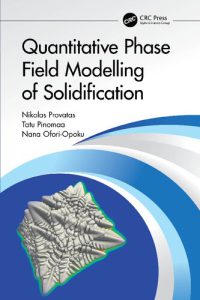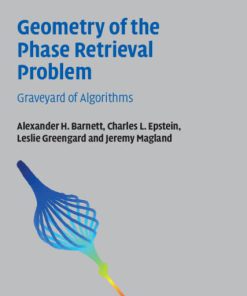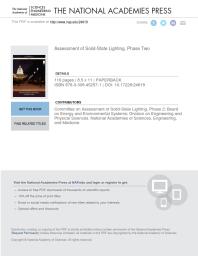Quantitative Phase Field Modelling of Solidification 1st Edition by Provatas 9781000435054 1000435059
$50.00 Original price was: $50.00.$25.00Current price is: $25.00.
Quantitative Phase Field Modelling of Solidification 1st Edition Provatas – Ebook Instant Download/Delivery ISBN(s): 9781000435054, 1000435059

Product details:
- ISBN 10:1000435059
- ISBN 13: 9781000435054
- Author: Provatas
Quantitative Phase Field Modelling of Solidification
Table contents:
CHAPTER 1 ◾ A Brief History of Phase Field Modelling
CHAPTER 2 ◾ Overview of This Book
SECTION I
CHAPTER 3 ◾ Recap of Grand Potential Thermodynamics
CHAPTER 4 ◾ The Grand Potential Phase Field Functional
4.1 Interaction between order parameters
4.2 Properties of the single-phase grand potential ωϑ(μ)
4.3 Concentration in a multi-phase system in the grand potential ensemble
CHAPTER 5 ◾ Phase Field Dynamics: {ϕα,ci} versus {ϕα,μi} Evolution
5.1 Time Evolution in the “traditional” fields {ϕα} and {ci}
5.2 Reformulation of phase field model dynamics in terms of ϕα and μi
5.2.1 Order Parameter Evolution
5.2.2 Chemical Potential Evolution
CHAPTER 6 ◾ Re-Casting Phase Field Equations for Quantitative Simulations
6.1 Non-variational modifications to phase field equations
6.2 Choice of interpolation functions
CHAPTER 7 ◾ Equilibrium Properties of the Grand Potential Functional
7.1 Equilibrium concentration field
7.2 Equilibrium solid-liquid interfaces
7.3 Equilibrium solid-solid interfaces: approach I—basic model
7.4 Equilibrium solid-solid interfaces: approach II—Modification of model
7.5 Selecting between phase field models
CHAPTER 8 ◾ Thermal Fluctuations in Phase Field Equations
8.1 Non-dimensional form of phase field equations
8.2 Simplification of noise amplitude for the order parameter equation
8.3 Simplification of noise amplitude for the solute equation
SECTION II
CHAPTER 9 ◾ Special Cases of the Grand Potential Phase Field Model
9.1 Polycrystalline Multi-Component Alloy Solidification at Low Supersaturation
9.1.1 Evaluating the Equilibrium Reference Chemical Potentials μieq
9.1.2 Re-Casting Differential Equations in Eq. (9.6) in Terms of Supersaturation
9.1.3 Practical Limits of Model I: Multi-Component Version of the Model of Ofori-Opoku et al.
9.1.4 Practical Limits of Model II: Two-Phase Binary Alloy Model of Plapp
9.1.5 Non-Dimensional Form of the Phase Field Model Described by Eqs. (9.16) and (9.19)
9.1.6 Thin Interface Limit of Phase Field Equations
9.2 Multi-phase Binary Alloy with Quadratic Solid/Liquid Free Energies
9.2.1 Solid-Liquid Phase Coexistence
9.2.2 Grand Potential Density of Phase, Multi-Phase Concentration and Susceptibility
9.2.3 Casting the Chemical Potential and Phase Field Equations in “Supersaturation Form”
9.3 Multi-Phase, Multi-Component Alloys with Quadratic Free Energies
9.3.1 Free Energy and Susceptibility of a Single Phase
9.3.2 Vector Notation and Transformations between Concentrations and Chemical Potentials
9.3.3 Grand Potential and Concentration of a Single Phase
9.3.4 Multi-Phase Concentration, Susceptibility and Concentration Difference
9.3.5 Grand Potential Driving Force for Multi-Phase Solidification
9.3.6 Casting the Driving Force in Terms of Supersaturation
9.3.7 Final Form of Phase Field Equations in Terms of Supersaturation Driving Forces
CHAPTER 10 ◾ Application: Phase Field Modelling of Ternary Alloys
10.1 Thermal Spray Coating Deposition of WC-Co
10.2 Representation of Thermodynamic Phases
10.3 Tabulated Tielines in the Low Supersaturation Limit
10.4 Mobility and Diffusion Coefficients in Ternary Systems
10.5 Low Supersaturation Limit of a Ternary Alloy in the Grand Potential Phase Field Model
10.6 Phase field Parameters for Emulating the Sharp Interface Limit
10.7 Simulations of Carbide Dissolution
SECTION III
CHAPTER 11 ◾ Interpreting Asymptotic Analyses of Phase Field Models
11.1 What is an Asymptotic Analysis of a Phase Field Model About?
11.2 Understanding the Role of λ as an Asymptotic Convergence Parameter
11.3 Interpreting the Role of λ in Asymptotic Analysis and the Noise Amplitude
SECTION IV
CHAPTER 12 ◾ The Regime of Rapid Solidification
CHAPTER 13 ◾ Modelling Continuous Growth Kinetics in the Diffuse Interface Limit of Grand Potential Phase Field Equations
13.1 Review of the Continuous Growth Model of Rapid Solidification
13.1.1 Kinetic Undercooling of the Interface in Henrian Solutions
13.2 Continuous Growth Model Limit of the Grand potential Phase Field Model
13.2.1 Specializing Eq. (13.20) into the CGM Model of Eq. (13.6): Full Drag Case
13.2.2 Specializing Eq. (13.20) into the CGM Model with Zero Drag
13.2.3 Relating 1/vcPF to Interface Kinetic Coefficient β for the Case of Ideal Binary Alloys
13.3 Non-equilibrium partition coefficient k(v0) and choice of anti-trapping
13.3.1 Chemical Potential Jump at the Interface
13.3.2 Evaluation of Δ \mathaccentVbar016F and an Implicit Equation for k(v0) from Eq. (13.31)
13.3.3 Computing k(v0) for an Ideal Binary Alloy
CHAPTER 14 ◾ Application: Phase Field Simulations of Rapid Solidification of a Binary Alloy
SECTION V
APPENDIX A ◾ Incorporating Temperature in the Grand Potential Phase Field Model
APPENDIX B ◾ Asymptotic Analysis of the Grand Potential Phase Field Equations
B.1 LENGTH AND TIME SCALES
B.2 PHASE FIELD EQUATIONS WRITTEN IN PERTURBATION VARIABLES
B.2.1 Convenient Notations and Definitions
B.3 FIELD EXPANSIONS AND MATCHING CONDITIONS OF OUTER/INNER SOLUTIONS
B.4 OUTER EQUATIONS SATISFIED BY PHASE FIELD EQUATIONS
B.5 INNER EQUATIONS SATISFIED BY PHASE FIELD EQUATIONS
B.5.1 Phase Field Equation
B.5.2 Chemical Potential Equation
B.5.3 Constitutive Relation between c and μ
B.6 ANALYSIS OF INNER EQUATIONS AND MATCHING TO THEIR OUTER FIELDS
B.6.1 O(1) Phase Field Equation (B.24)
B.6.2 O(1) Diffusion Equation (B.27)
B.6.3 O(ϵ) Phase Field Equation (B.25)
B.6.4 O(ϵ) Diffusion Equation (B.29)
B.6.5 O(ϵ2) Phase Field Equation (B.26)
B.6.6 O(ϵ2) Diffusion Equation (B.29)
Bibliography
Index
People also search:
quantitative phase field modelling
quantitative phase field modelling of solidification
what is phase field modeling
what is quantitative modeling
what is a quantitative field
You may also like…
Earth Sciences - Geography
Fundamentals of Spatial Analysis and Modelling 1st Edition Jay Gao
Uncategorized
Mathematics - Applied Mathematics
Geometry of the Phase Retrieval Problem Graveyard of Algorithms 1st Edition Alexander H. Barnett
Uncategorized
Engineering - Energy & Power Resources
Higher Education Textbooks
Computers - Networking Society












